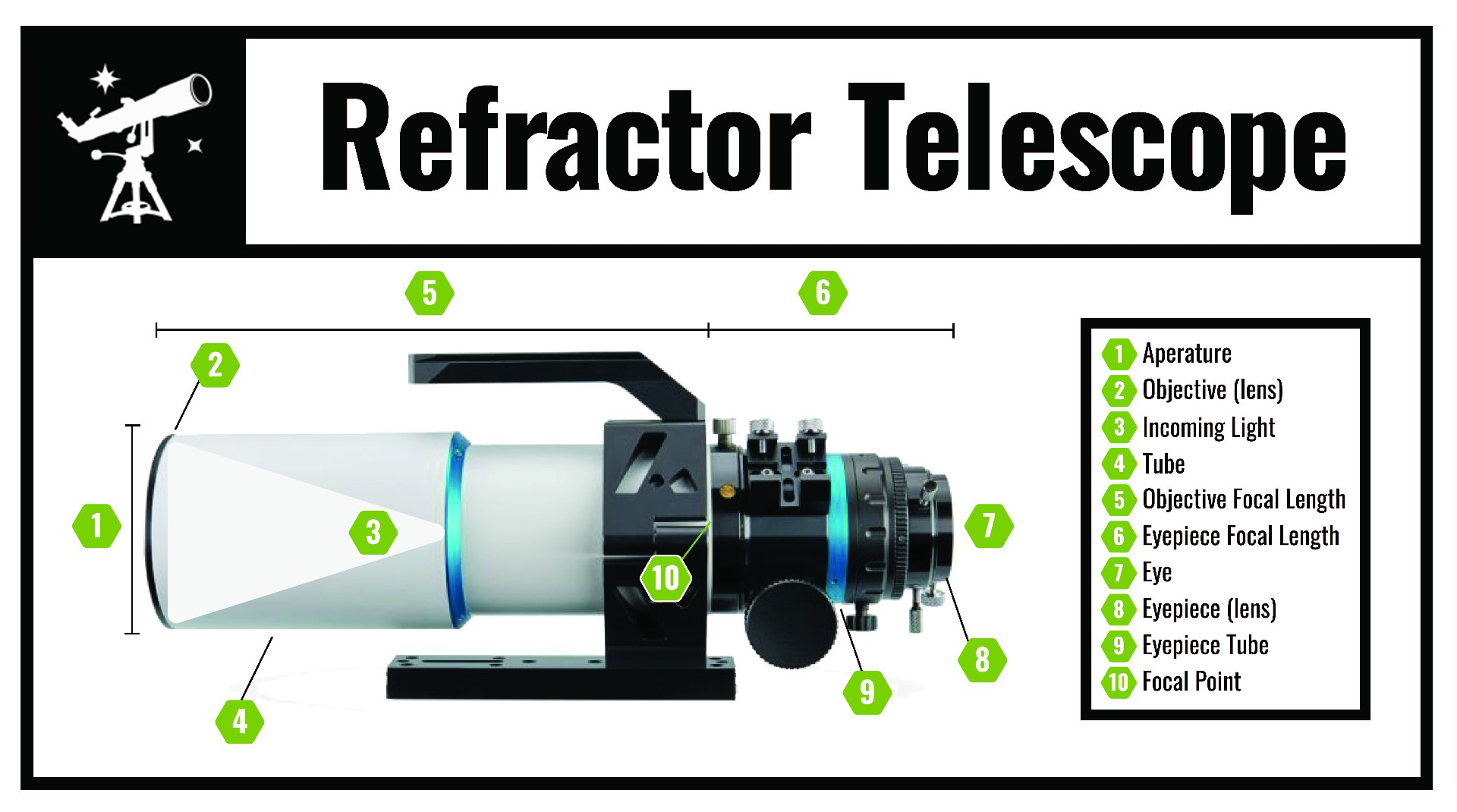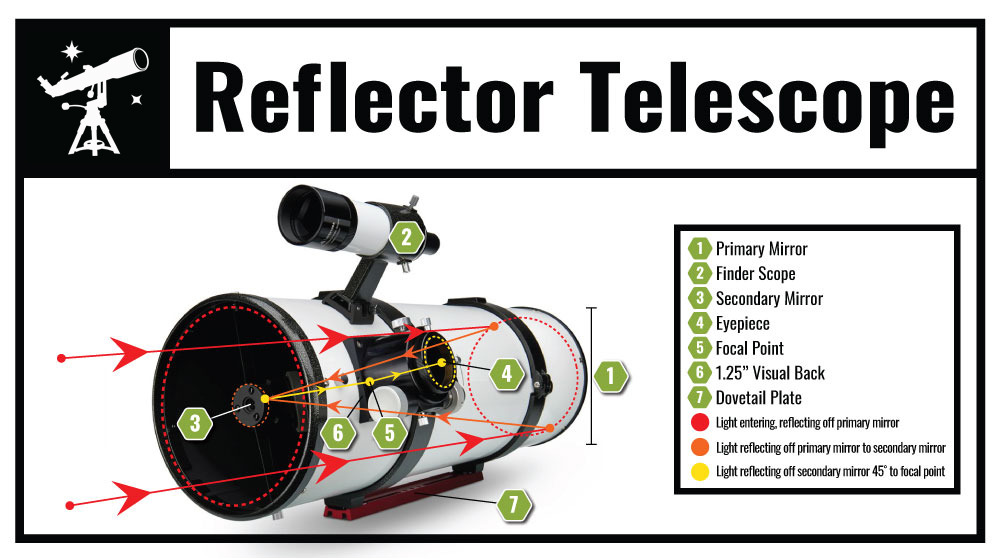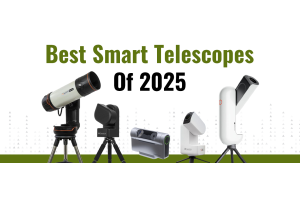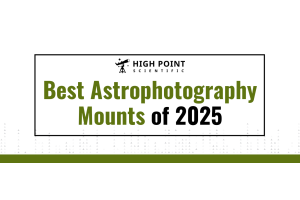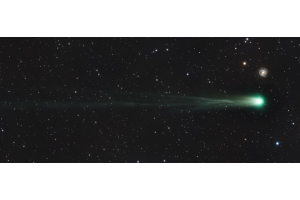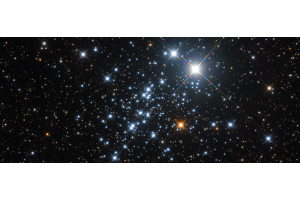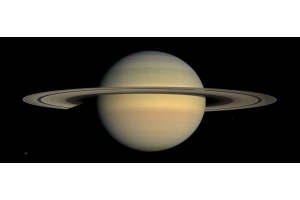
People often have a very wide range of expectations about what they’re going to see through their first telescope. Many new astronomers look into the eyepiece for the first time expecting to see vivid colors and incredible detail - something that looks like it came right from NASA. What they see instead is something different, but no less incredible. In this article, we’re going to be breaking down the different types of telescopes and what they can actually show you.
Understanding The Impact of Light Pollution
Most of you reading this article are probably dealing with some form of light pollution. Light pollution, caused by city, street, or other light sources at night, can decrease the contrast of the sky through your eyepiece. This makes it difficult, borderline impossible, to see many deep-sky objects no matter how large your aperture. It’s why we like to travel to dark, remote sites far away from any cities. Although your telescope may be collecting the light, it still tends to be pretty diffuse even through the largest of telescopes. Having a low contrast background makes picking out already faint objects nearly impossible. Even an ultra-high contrast filter would still make this task very difficult. For visual astronomers, if you want to see what your telescope can reveal, getting away from the city lights is your best option.
The Different Types of Telescopes
There are many types of telescope designs that exist in astronomy and they are all, in some form or another, either a reflecting design or a refracting design at heart. A refractor is a type of telescope that uses a lens to bend (or refract) light to a point. The point where the light path intersects is called the “focal point” and is where your eyepiece, camera, or diagonal would go. The length from the lens to the focal point is known as the “focal length” of the telescope.
A reflector, on the other hand, uses mirrors to reflect the light back into a secondary mirror, which then bounces back into the eyepiece. Light from space passes into the optical tube and bounces off a curved “parabolic” mirror. This mirror is usually made up of a special type of glass, with an aluminum reflective coating.
From the parabolic mirror, the light reaches the secondary mirror. Unlike the primary mirror, the secondary mirror is flat and is angled 45 degrees relative to the primary. This secondary mirror is made from the same material as the primary mirror and has the same reflective properties. The light then bounces through a hole in the side of the telescope. This is where the focuser goes, and in the focuser is where the eyepiece is placed. The diagram below best illustrates the path that the light takes.
Reflectors, refractors, and Cassegrain telescopes come in different sizes and at different prices. For the purposes of this article, we’re going to break these telescopes into three different sizes: small, medium, and large telescopes. Each of these categories will have two distinct subcategories: inexpensive options and the more expensive options (usually telescopes with special designs, GoTo capability, or premium optics).
SMALL
Inexpensive ($50-300)
- 60-70mm refractor
- 114mm Newtonian
Expensive ($500+)
- Doublet or Triplet Refractor (70-90mm)
MEDIUM
Inexpensive ($300-500)
- 4-6” Newtonian reflector
- 4” refractor
Expensive ($500+)
- Celestron NexStar 4SE, Celestron NexStar 6SE
LARGE
Inexpensive ($500-$1000)
- 8” Dobsonian
- 10” Dobsonian
Expensive ($1000+)
- 12-14” Dobsonian, Celestron NexStar 8SE
Binoculars are also a great option in the small, inexpensive category.
The Moon
Small
You can see a surprising amount of detail on the Moon through a small telescope or binoculars. First, you can easily spot some of the larger craters. You will be able to spot the lunar “seas” - dark patches on the Moon formed by lava billions of years ago during the Moon’s formation. With the right lighting, you can even spot some of the larger mountain ranges on the Moon, such as the Apennine mountain range sandwiched between the Sea of Shadows and the Sea of Vapours. Larger impact craters also become visible, such as Tycho crater, with its sprawling bright white ray system; or Copernicus crater, also with a significant ray system.
Medium
With a medium-sized telescope, even more detail on the lunar surface will become apparent. Suddenly, impact craters on the Moon that might appear minuscule will jump out in incredible relief. You will be able to observe the central “peaks” in larger lunar craters such as Copernicus & Tycho craters. Ancient lava rivers deeper than the Grand Canyon, such as the one that spans across Aristarchus & Herodotus craters, become more apparent.
Large
Lastly, you’re in for a real treat with a large telescope. An 8” Dobsonian can resolve details as small as ~2 miles across on the Moon. This means even details such as the mountains and craters seen by the Apollo astronauts become visible. Real detail in larger impact craters, such as jagged slopes and other rugged detail, becomes visible. Gazing upon the Moon with a large telescope may require a lunar filter to help reduce the intense glare. Adding a 13-25% polarizing filter to reduce glare will help you see even more detail.
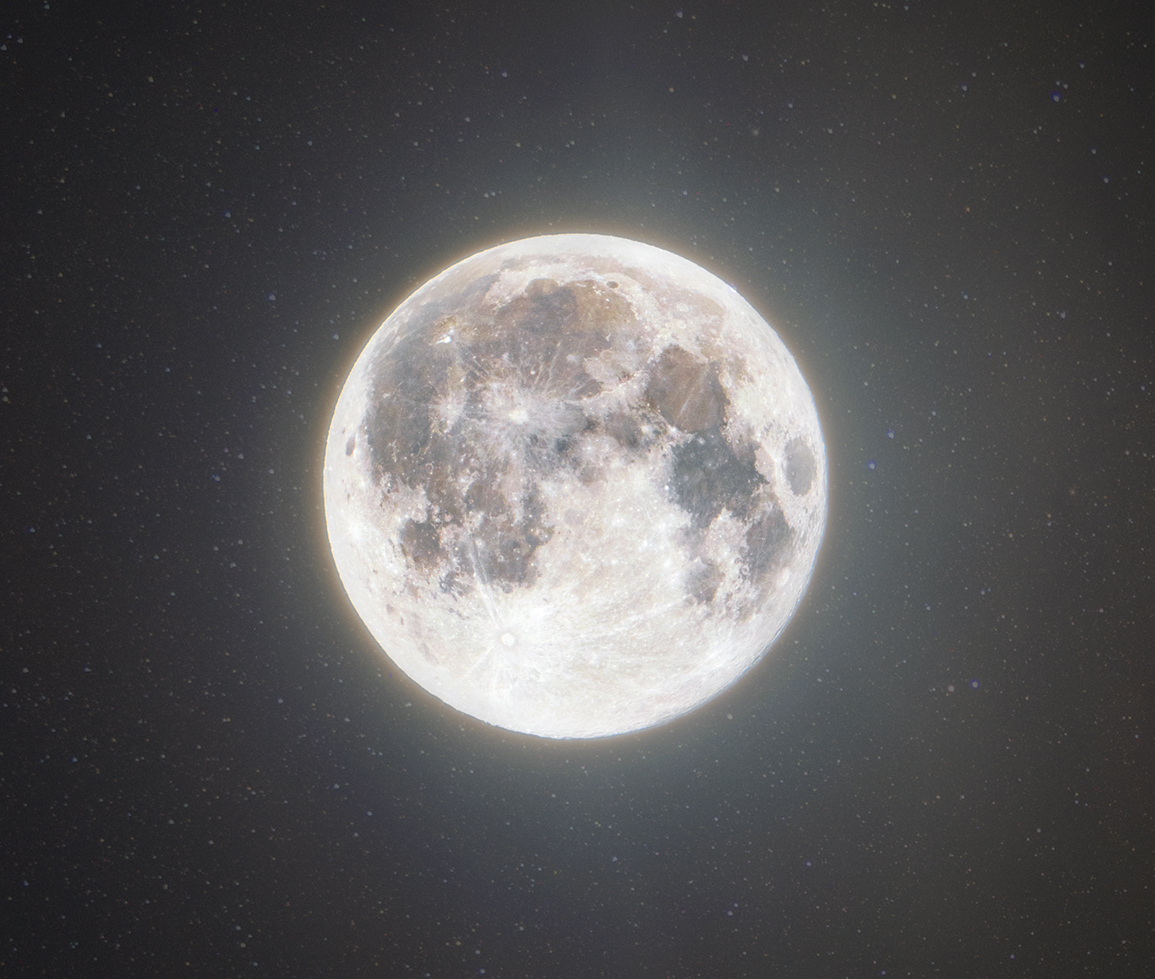 Click to Enlarge Image
Click to Enlarge Image
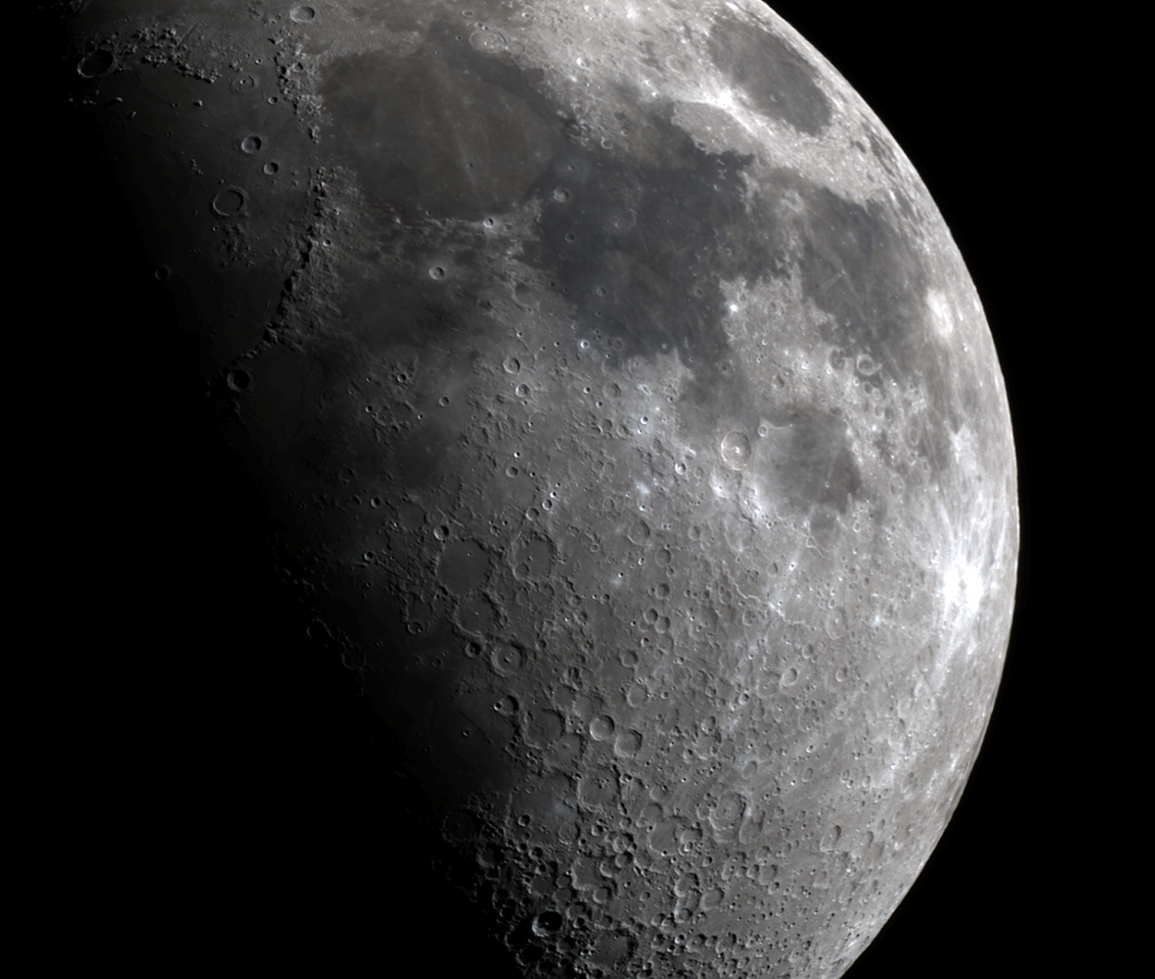 Click to Enlarge Image
Click to Enlarge Image
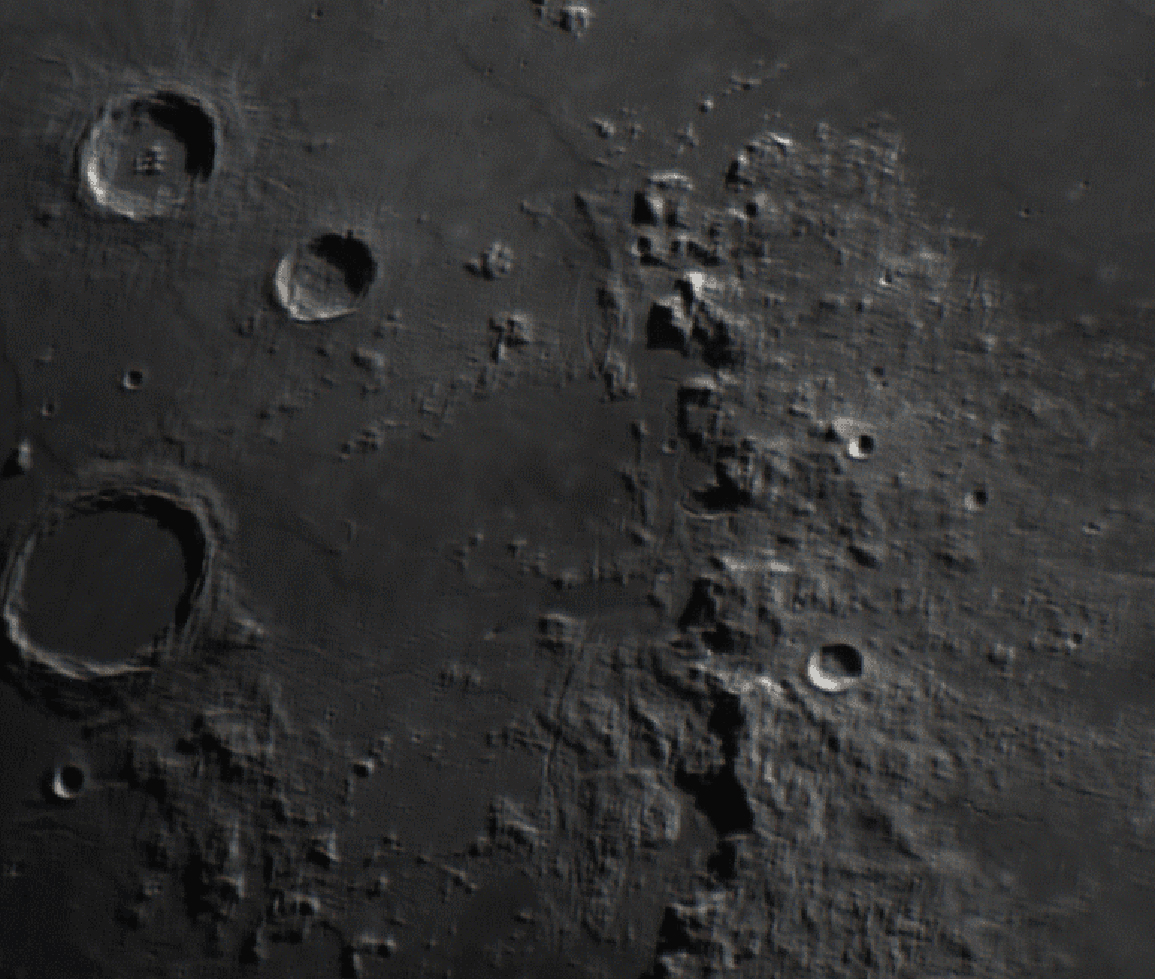 Click to Enlarge Image
Click to Enlarge Image
The Planets
Small
Planets are really tiny. As such, with a small telescope, it’s going to be hard to see much. Binoculars or a small telescope, for example, should be able to show you the four Galilean moons (Io, Europa, Ganymede, Callisto) of Jupiter. You will also be able to see two distinct “lobes” on Saturn where the rings should be, as well as Titan (Saturn's largest moon). Venus will distinctly show a phase; however, you will have trouble seeing Mercury as anything more than a dot. Uranus and Neptune will appear as nothing more than points of light too.
Medium
With a medium-sized telescope, you will be able to resolve more detail. You’ll distinctly see the phases of Mercury & Venus. You should be able to see the polar ice caps on Mars, as well as maybe a hint of surface detail if the seeing is right. You’ll distinctly see at least two salmon-color red bands across the disk of Jupiter, as well as the four Galilean Moons. Turning to Saturn, you can see the Cassini division in the rings. The “major four” moons of Saturn should be possible at this aperture: Titan, Rhea, Dione, and Tethys. Tethys, however, will be more of a challenge for an astronomer with a 4” telescope, but those with a 5-6” telescope should be able to spot the moon. You will likely be able to pick out Uranus as a disk, with perhaps a moon or two visible. Neptune will be a challenge, but those at the upper end of what we’d consider a “medium-sized” telescope might be able to resolve Neptune as a disk.
Large
This is where the fun begins. With a large telescope, the entire solar system will appear to come alive through your eyepiece. Mercury & Venus will not appear to change much (although some skilled observers with large telescopes have reported seeing hints of cloud detail on Venus). You’ll be able to observe a significant amount of surface detail on the face of Mars, such as Chryse Planitia, Hellas Planitia, and more. 6-8+ cloud belts will be visible on Jupiter, and the ever-shrinking Great Red Spot will reveal its pinkish color. Ganymede and Callisto will also be visible as disks in their own right - the only other moons in the solar system besides our own that you can see in such detail.
With Saturn, you’ll be in for a real treat. Titan, Rhea, Dione, and Tethys all become easy to spot through an 8” telescope or greater. Enceladus, instead of being something that requires averted vision to see, becomes visible at elongation from Saturn. Iapetus and Hyperion should also both be visible at this aperture. You might also be able to spot very tiny Mimas with a telescope 10 inches or greater; however, this will once again greatly depend on the seeing conditions. Saturn will also show several gaps in the rings and will certainly resolve the Cassini division with clear detail.
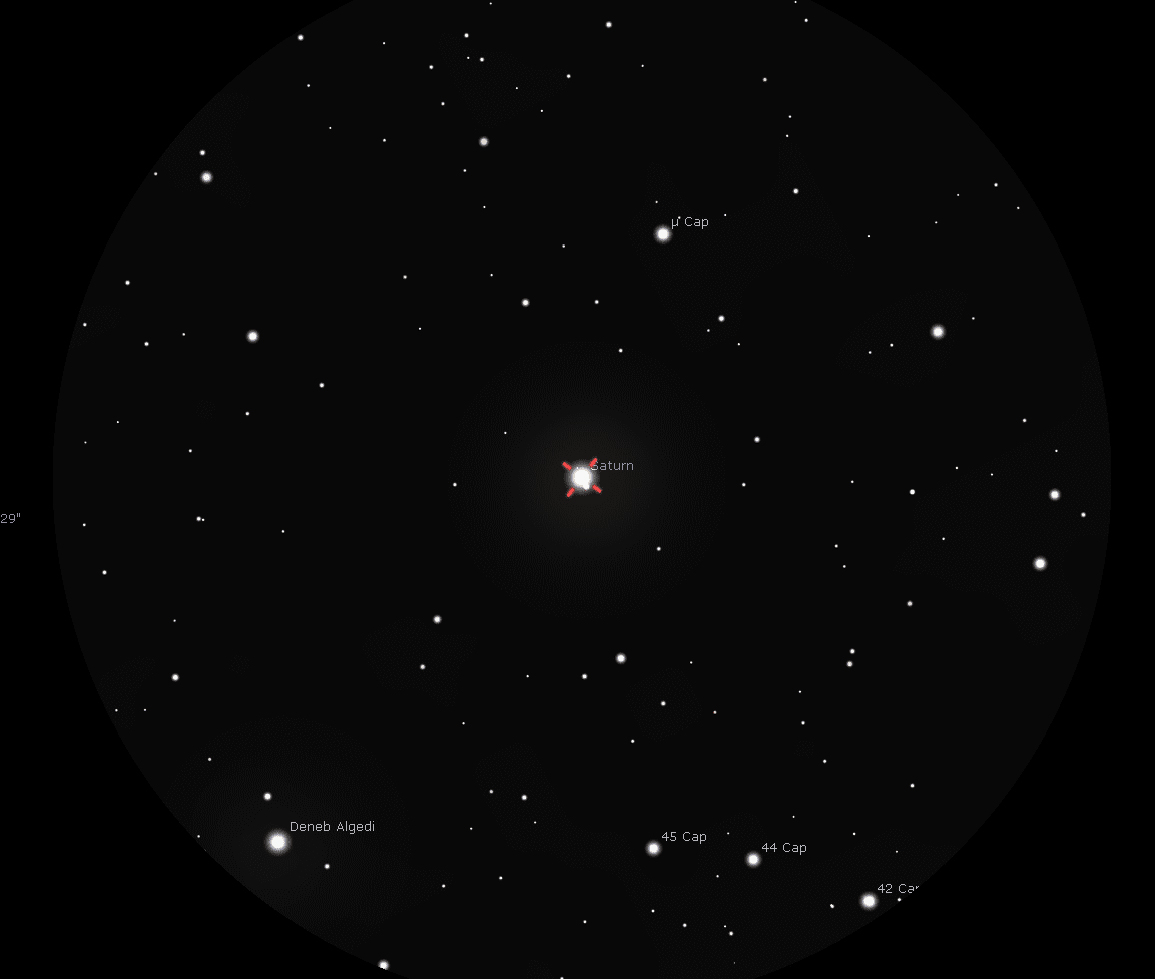 Click to Enlarge Image
Click to Enlarge Image
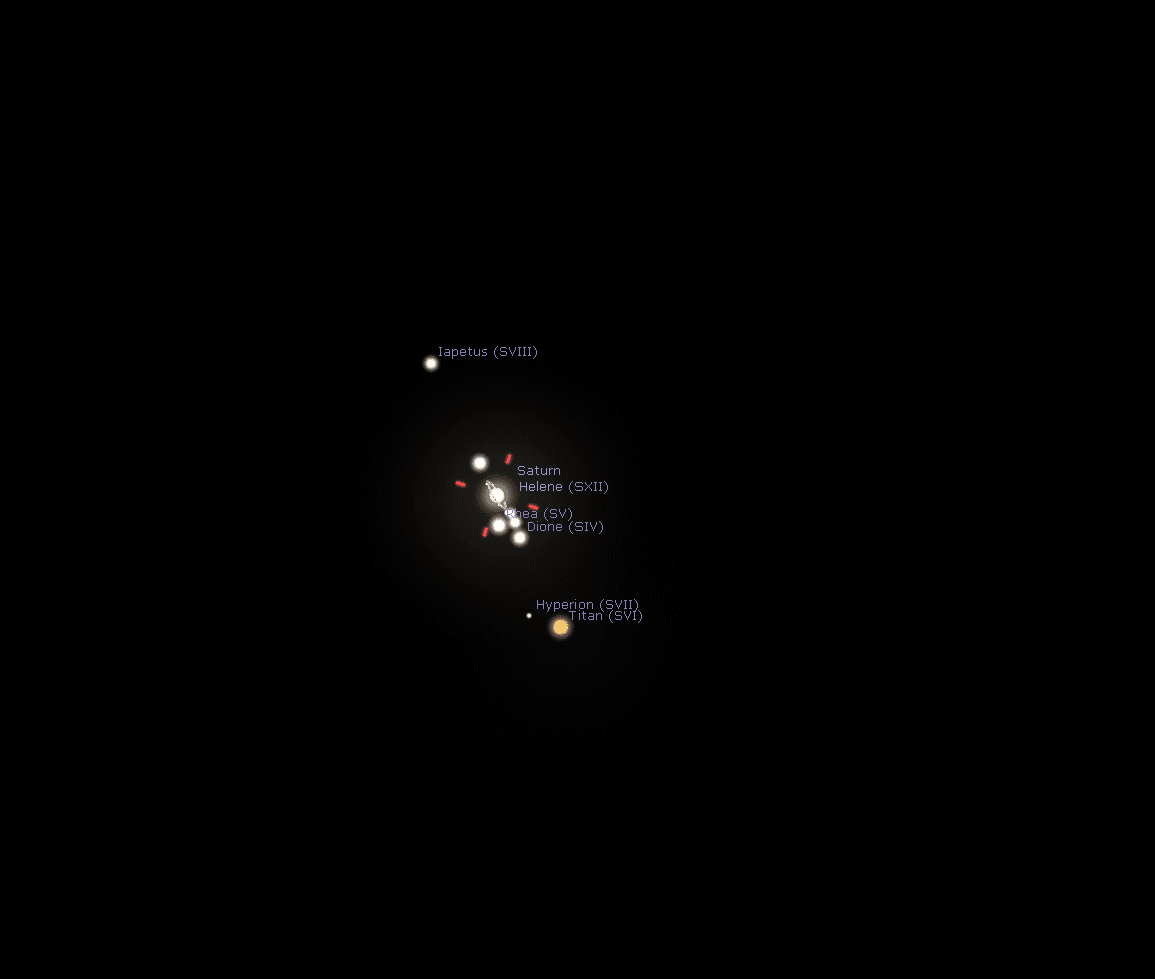 Click to Enlarge Image
Click to Enlarge Image
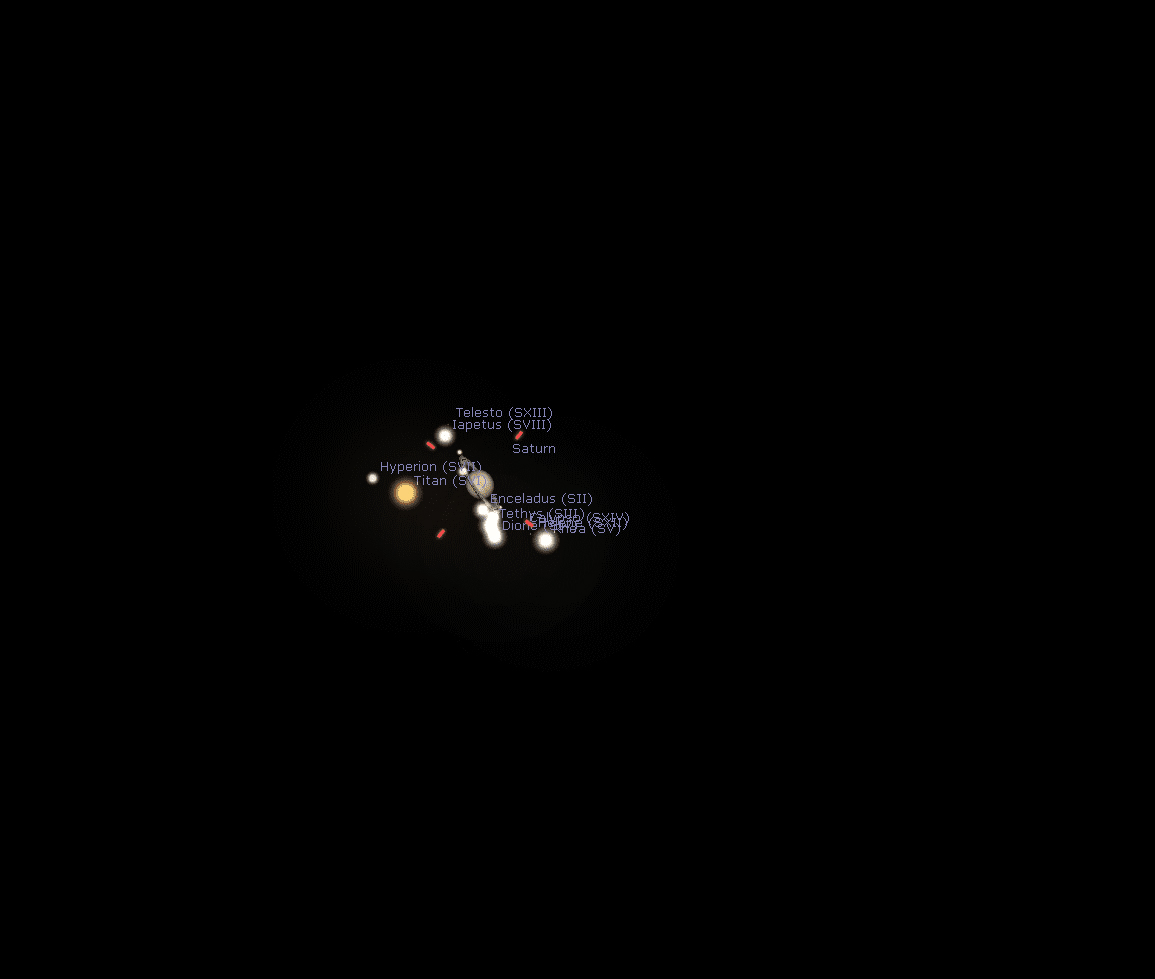 Click to Enlarge Image
Click to Enlarge Image
Binary Stars
Small
Splitting double stars is a lot of fun; however, this may be a difficult challenge as many require a decent amount of resolution capability. Some double stars, such as Mizar and Alcor, can be split with the naked eye alone. A small telescope, however, will easily be able to split the two components of the “Double Double” in Lyra. Another favorite, Albireo in Cygnus, can also be split with a small telescope. When looking at Albireo, you’ll see a stunning pair of stars: one a sapphire red, the other a deep blue.
Medium
Like with planets, the larger you go, the more resolution capability you can achieve. And in this case, a larger telescope results in a better ability to split double stars. Castor, for example, will appear as two binary stars through a medium-sized telescope. The trapezium in the heart of Messier 42, the Orion Nebula, will also become visible as distinct stars. The stars in the trapezium are all bound together by gravity, much like a cluster, but can also be considered their own system of stars too. Other stars such as Eta Cassiopeiae & Algieba can be split with a medium-sized telescope. Mizar & Alcor, instead of appearing as two distinct stars, resolve themselves as pairs of stars for a total of four stars. The Double Double in Lyra will also split into four distinct stars, provided you have a large enough field of view.
Large
With a large telescope, most double stars will be within your reach, with splits as small as 2-3” arcseconds. A challenging target for those with a large telescope might be Sirius B, the companion star to Sirius A some 8 light-years away from the Earth. Sirius B is what’s called a “white dwarf”, a star that has long since faded away and left behind its dense core, like burning embers from an extinguished fire.
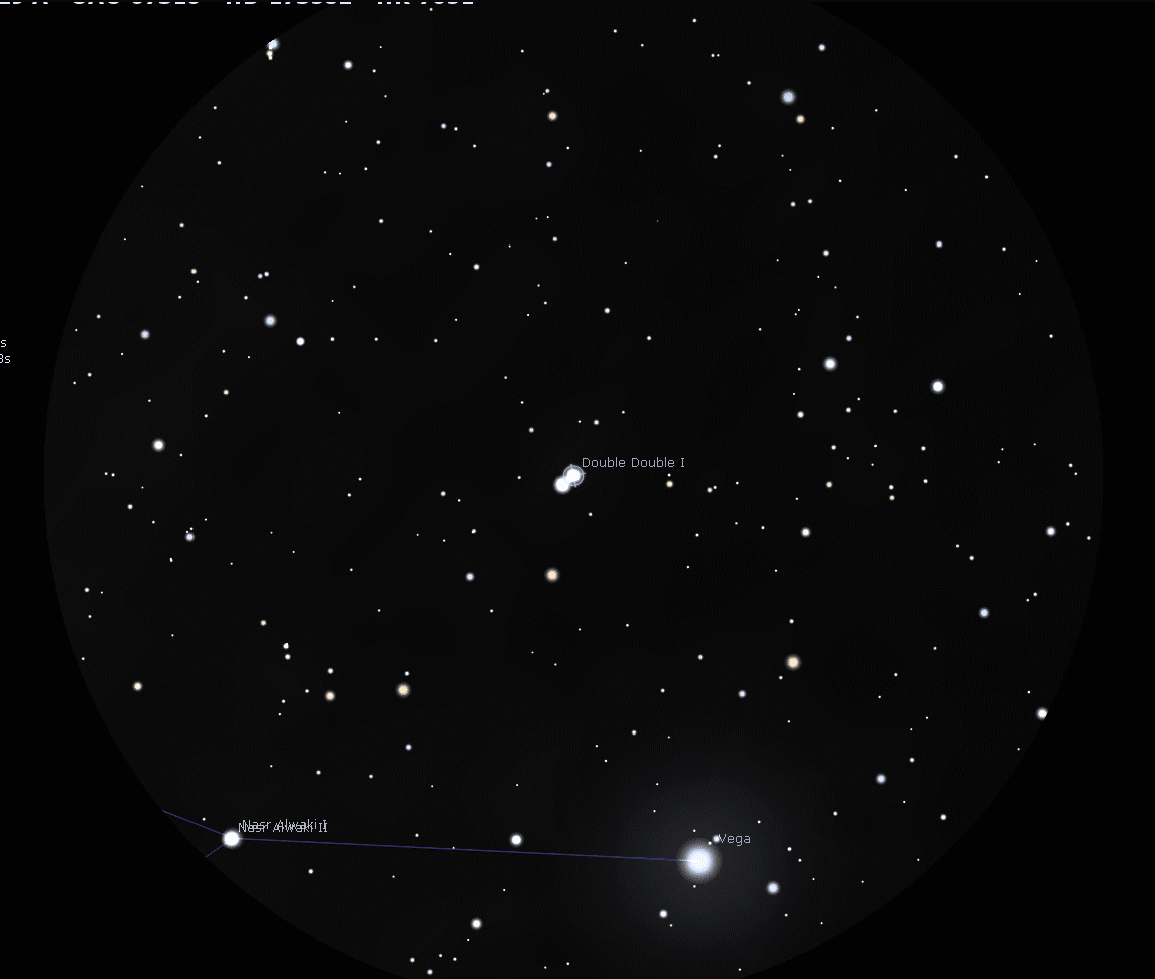 Click to Enlarge Image
Click to Enlarge Image
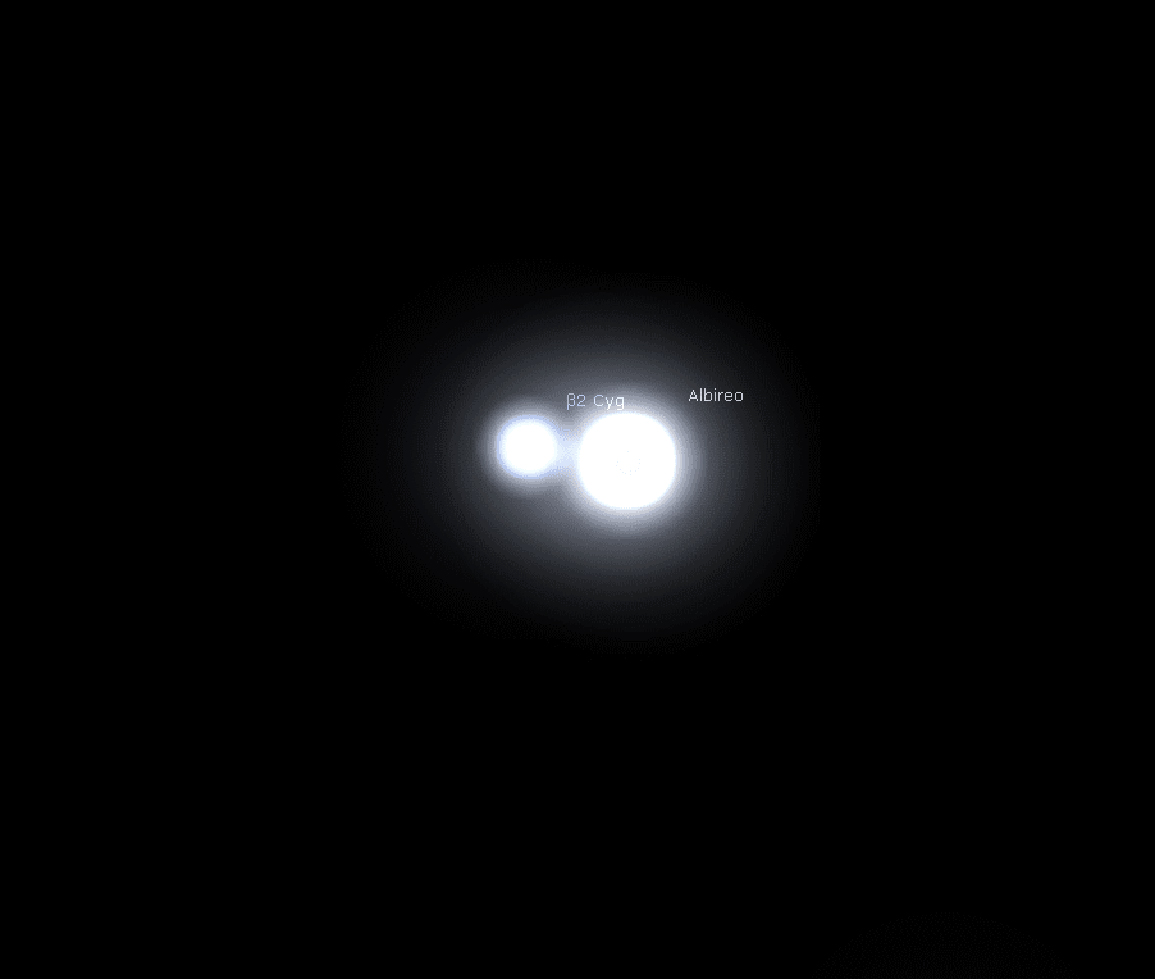 Click to Enlarge Image
Click to Enlarge Image
Star Clusters
Small
Ptolemy’s cluster in the constellation of Scorpius is an easy-to-spot open cluster in the night sky. This cluster has been known since the 2nd century, when it was first spotted by the astronomer Ptolemy in 130 AD. A pair of binoculars or a small telescope will resolve this faint fuzz in the sky as multiple stars that are close to one another.
Further south on the horizon (and invisible to those who live above 30 degrees north), you will also be able to spot Omega Centauri in the constellation of Centaurus in the late spring. This is the largest globular cluster in the night sky, and a small telescope will easily show a bright core and a smattering of stars. Omega Centauri spans a massive 150 light-years across and contains over 10 million stars.
You can also observe the closest open cluster to the Earth, the Pleiades, throughout most of fall and winter in the constellation of Taurus. The Pleiades, also known as the Seven Sisters, will show seven stars vaguely shaped like a dipper (not to be confused with the Little & Big Dipper) with the naked eye. Most of these stars are very hot and young, making this open cluster a very obvious night sky object. A small telescope will clearly show the main stars in this open cluster, as well as several less obvious members.
Medium
For those with a medium-sized telescope, in addition to the objects above, you can also check out Messier 4 in the summertime in the constellation of Scorpius. This globular cluster spans 35 light-years across and is located a mere 1 degree away from the bright star Antares, making it very easy to find with your telescope. Through telescopes of this size, you’ll be able to resolve individual stars within Messier 4, instead of bright fuzzes.
Another popular globular cluster, larger than Messier 4, can be found in the springtime in the constellation of Canes Venatici. This globular cluster has a higher surface brightness than Messier 4 and can be found in a less star-dense region of the night sky, farther above the horizon, making it easier to spot. Like Messier 4, you’ll be able to resolve individual stars within this globular cluster even within severely light-polluted skies.
Some consider Messier 13 to be the “king” of globulars (although the author of this article might argue Omega Centauri is a much more appealing object). However, there’s no disputing that Messier 13 is an incredibly bright and brilliant globular cluster. Also known as the “Great Globular Cluster in Hercules”. This is a cluster that can be found with binoculars first, giving you a good idea of where to look with your telescope. You’ll need to increase the magnification to around 100x to see individual stars with telescopes in this aperture range. Keep looking carefully and you’ll notice chains of stars curving out from the core, with the entire cluster looking like some kind of sea creature or a splash of stars.
Large
Not far from Messier 13, you can also find Messier 92. This globular cluster is also fairly bright, although a large telescope will help you find more detail. Within Messier 92, you’ll be treated to stars of a wide variety of colors. Of note are the brighter orange stars that stand out in stark relief to the pale white of the rest of the cluster.
Another fun globular to look at with a large telescope is Messier 56 in the constellation of Lyra, about halfway between Albireo and Sulafat. Measuring about 84 light-years across, stars within Messier 56 can be resolved with telescopes having an aperture of 8” or larger.
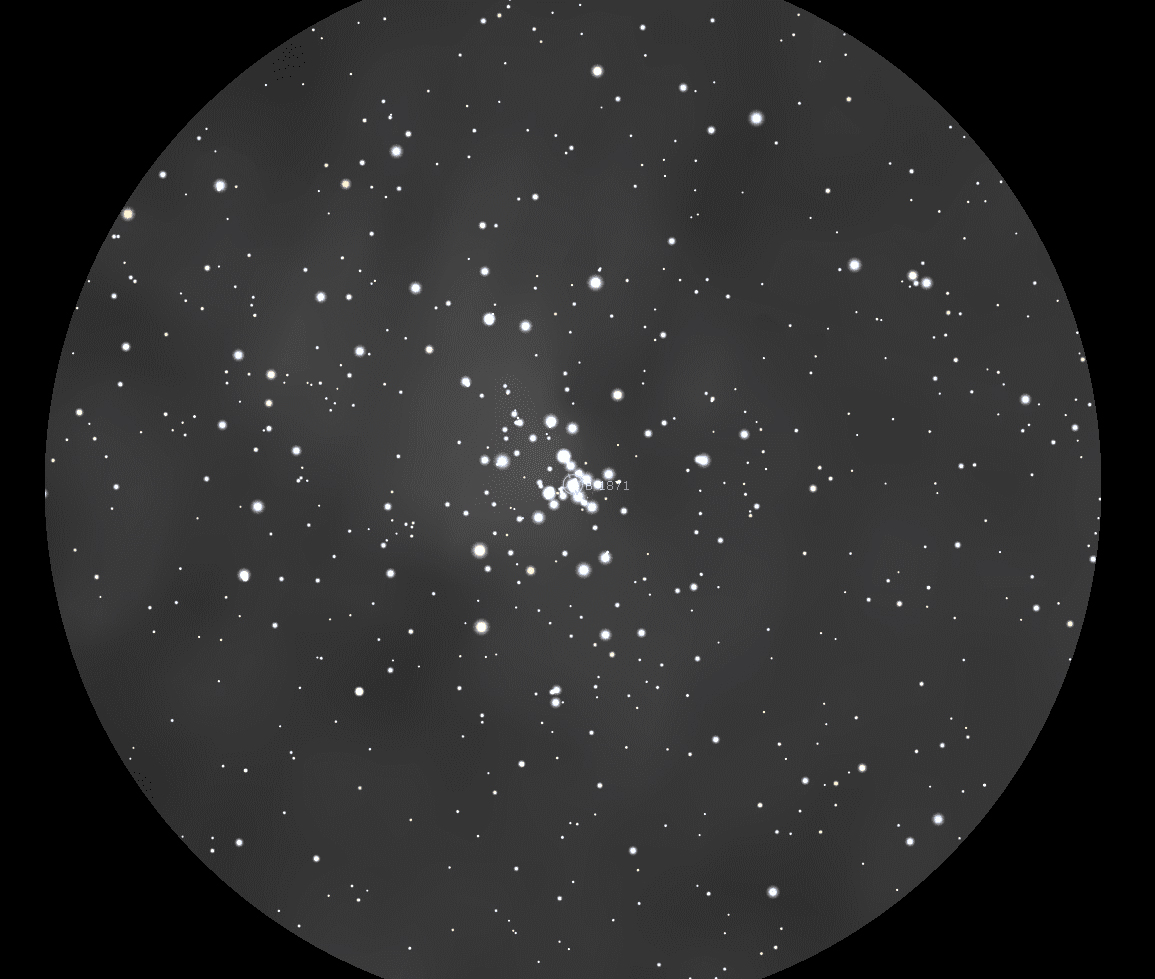 Click to Enlarge Image
Click to Enlarge Image
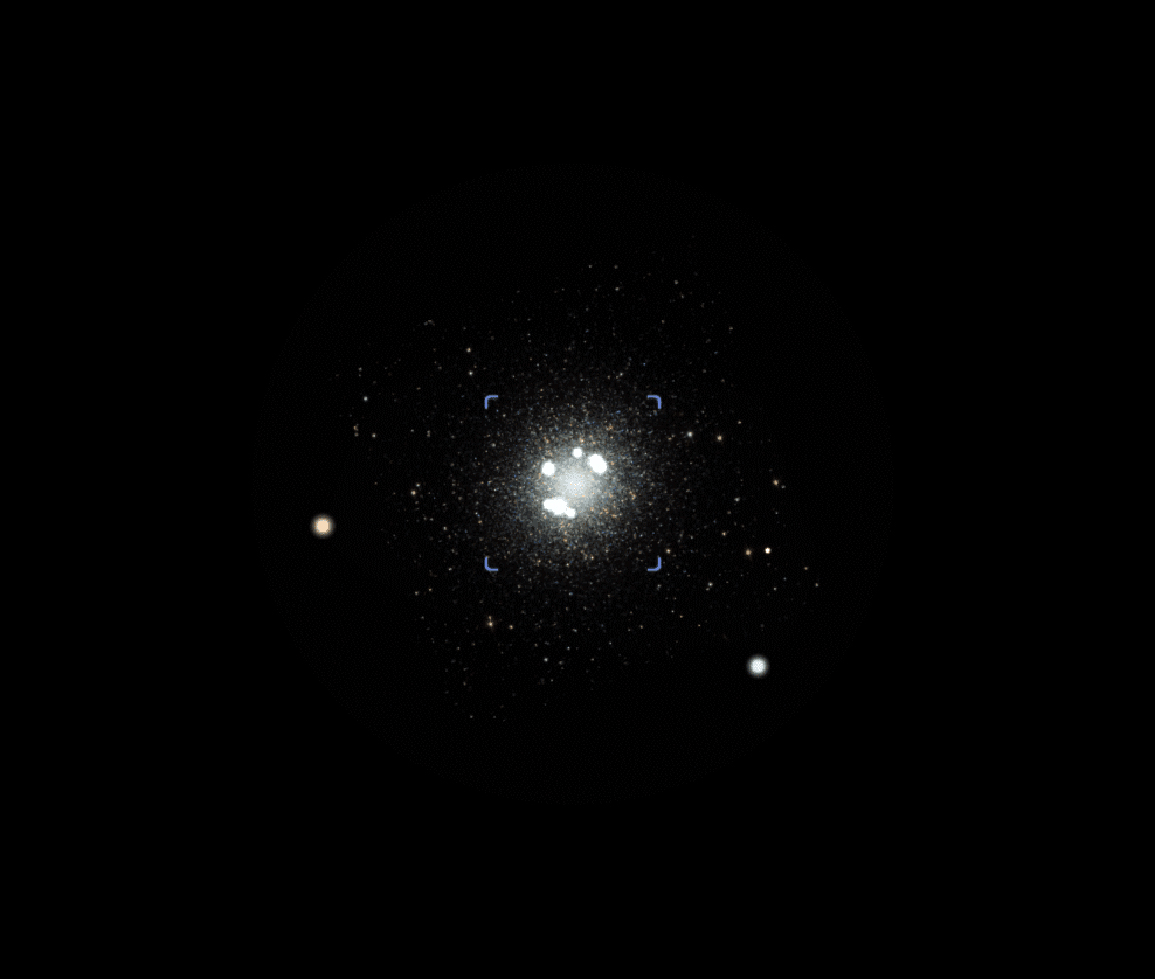 Click to Enlarge Image
Click to Enlarge Image
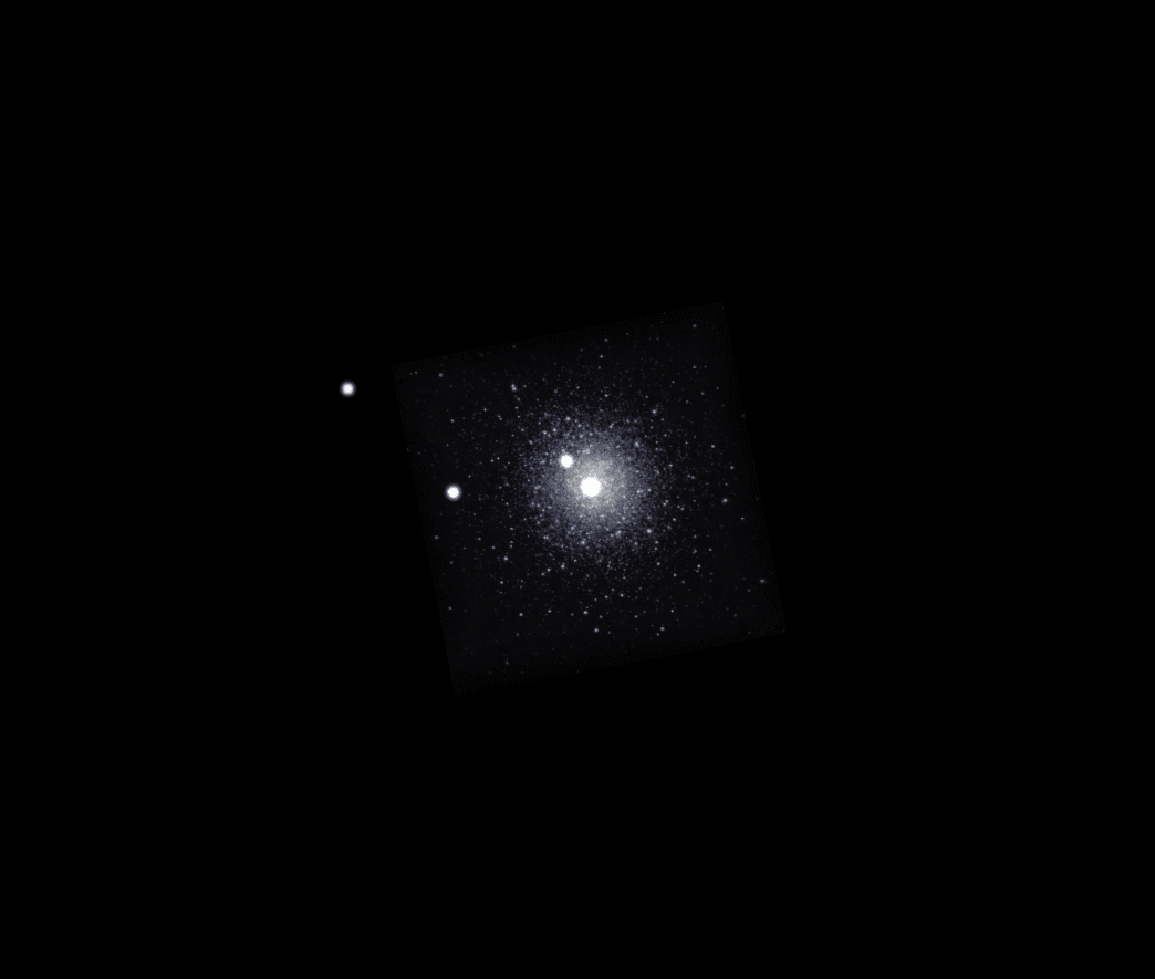 Click to Enlarge Image
Click to Enlarge Image
*Note that the real view would be dimmer as Stellarium’s nebula and cluster views are all created with long exposures.
Galaxies
Small
The easiest galaxy to spot is by far the Andromeda Galaxy, at least in the northern hemisphere. The Andromeda Galaxy is located in the constellation of Andromeda, most visible in the fall and winter skies. The Andromeda Galaxy has an apparent magnitude of about +4 and is visible to the naked eye without any optical aid. However, this can be a challenge in light-polluted skies. A small telescope or pair of binoculars will easily reveal the Andromeda Galaxy’s dim, elongated shape.
Near the Andromeda Galaxy, provided you have good dark skies, you should be able to spot the Triangulum galaxy through a small telescope as well. Although the Triangulum Galaxy is nearly the same distance from us as the Andromeda Galaxy, it’s much less massive, has a lower surface brightness, and significantly fewer stars. Light pollution will easily wash out the Triangulum Galaxy. It may only be observable to you through a large telescope in any kind of severe light pollution.
Medium
One of our absolute favorites, Messier 81 and 82, can be spotted in even a small telescope. However, medium-sized telescopes will begin to show you more detail. Messier 81, also known as Bode’s Galaxy, will appear as a faint fuzz but with two distinct “spirals”. The nearby Messier 82 will begin to show detail in its central region; it is an irregular galaxy undergoing a massive rate of star formation, resulting in its unusual structure.
Those with a medium-sized telescope should also check out the Leo Triplet. You can glimpse Messier 65, Messier 66, and NGC 3628 together in the same field of view. A magnification of around 75x will show all three as elongated patches, with M65 being the brightest and NGC 3628 the faintest of the three. Both M65 and M66 have bright cores, and mid-sized scopes will show some texture and mottling. Dark dust lanes can then be seen in all three, with a number of individual stars also becoming resolvable.
Another favorite of ours that we recommend for those with a medium-sized telescope is Markarian’s Chain. This string of galaxies may give you the “Hubble Deep Field” experience, where you can see dozens of faint galaxies all paired up with one another. Within Markarian’s Chain, you will see a pair of interacting galaxies, NGC 4435 and NGC 4438. These two are the brightest galaxies within the chain. This cluster is part of the Virgo Cluster, which contains over 2,000 galaxies in the constellation of Virgo.
Large
Although Messier 51 can be spotted in a medium-sized telescope, we recommend a large telescope for best enjoyment. Telescope aperture considerably impacts the detail of the faint objects one can see through a telescope. Through a large telescope, you’ll be able to spot two distinct spiral arms. Once again, your best bet would be to spend time at a dark sky site observing M51 and taking the time to let your eyes adjust to the light. After about 30 minutes of observing, you will be able to spot more detail. We recommend a magnification of anywhere from 60-150x for the best enjoyment of this beautiful galaxy.
Another faint, hard-to-see galaxy is Messier 64. It’s located in a fairly isolated part of the night sky in the constellation of Coma Berenice, about 17 million light-years away. With an apparent magnitude of ~+8.5, you’ll need a lot of aperture to really observe any detail on this one. Similar to Markarian’s Chain, we also recommend checking out the even more spectacular Coma Cluster. Other galaxies, such as Messier 85, Messier 100, and Messier 99, will also reveal themselves in telescopes of this aperture range.
Nebulae
Small
In the summertime months, near the heart of the Milky Way galaxy in Sagittarius, we recommend checking out Messier 8, also known as the Lagoon Nebula. Messier 8 is one of the few large nebulae visible to the naked eye. A small telescope will reveal its presence along with the nearby Trifid nebula.
We would of course be remiss in not mentioning perhaps the best deep-sky object of them all - the Orion Nebula in the constellation of Orion. With the naked eye, you might just see one star at the center of the misty patch. Binoculars will reveal a few more, but the view through a telescope will easily show four tiny stars twinkling brightly from the nebula’s heart. These stars are the Trapezium cluster, mentioned earlier in this article. This nebula is very bright and is our “go-to” recommendation for an aspiring astronomer to check out.
Medium
A good summertime nebula to check out with any telescope is the Eagle Nebula. While a small telescope will show you a faint outline of the nebula, a medium telescope will reveal much more detail, such as the famed “Pillars of Creation”. Near the Eagle Nebula, you can also check out the Omega/Swan Nebula, which will reveal some detail through a medium-sized telescope.
Large
At this aperture, many deep-sky objects become within your reach depending on the severity of your light pollution. You’ll be able to resolve nebulae in the Andromeda Galaxy, for example. Fainter planetary nebulae will be visible. The Ring Nebula can be found in the constellation of Lyra, midway between the two bright stars Sulafat and Sheliak. A small scope with a relatively low magnification of about 75x is enough to reveal its ring shape. However, a large telescope will reveal significantly more detail and structure to the nebula. Some think it resembles a slightly flattened donut, but to many others, its gray color clearly gives it the appearance of a smoke ring in space. Larger nebulae, such as the Orion Nebula, become absolutely rich with stunning detail that will take your breath away.
As you can see, the size of the telescope you are using has an enormous impact on not only the targets you will be able to observe but also the detail that will be visible to you. This is incredibly important to keep in mind when considering what your next telescope will be!
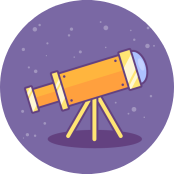
Learn More
If you are still struggling to determine what type of telescope is right for you, check out our AstronomyHub for more information, or contact our team for an expert opinion!





